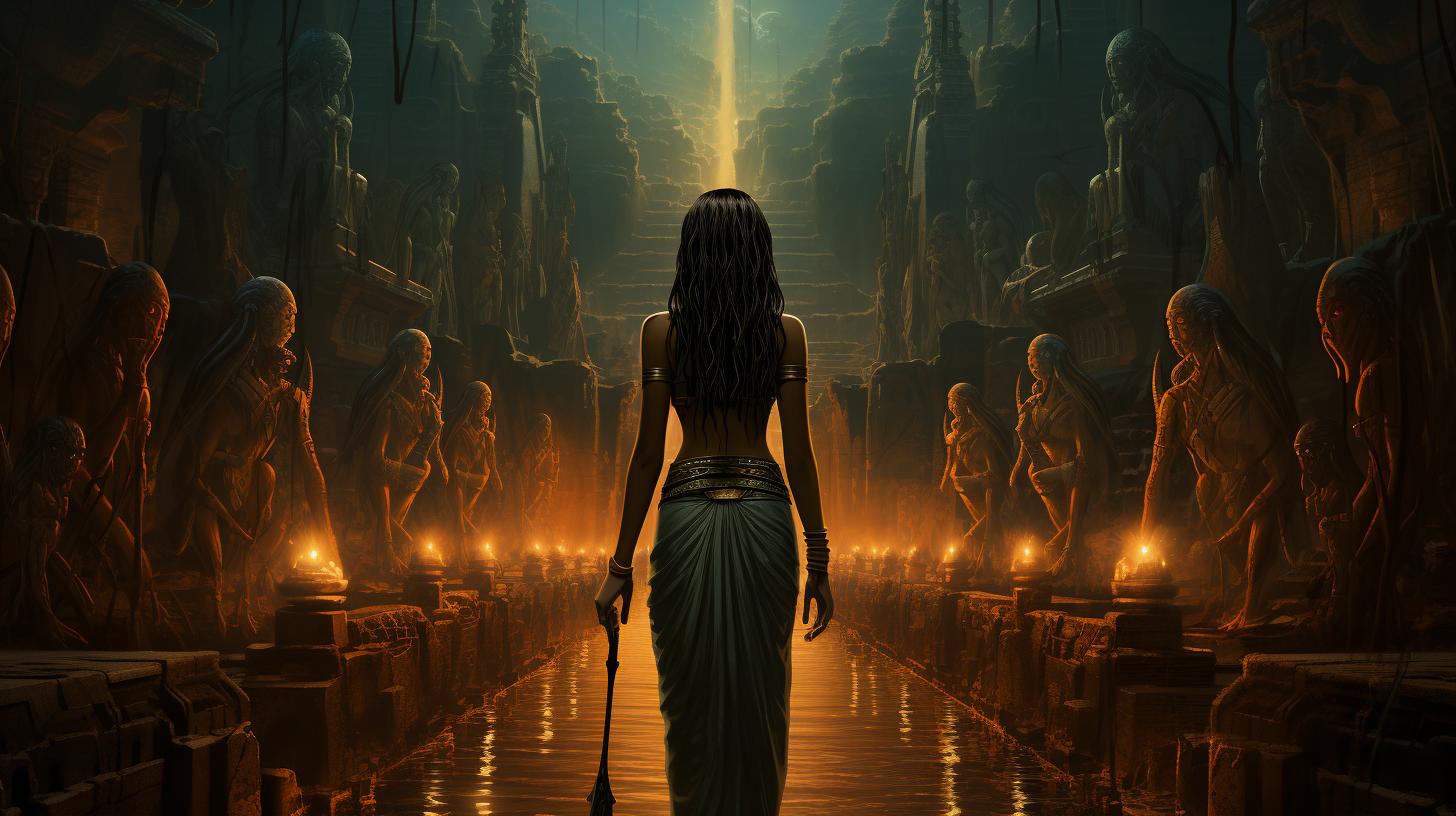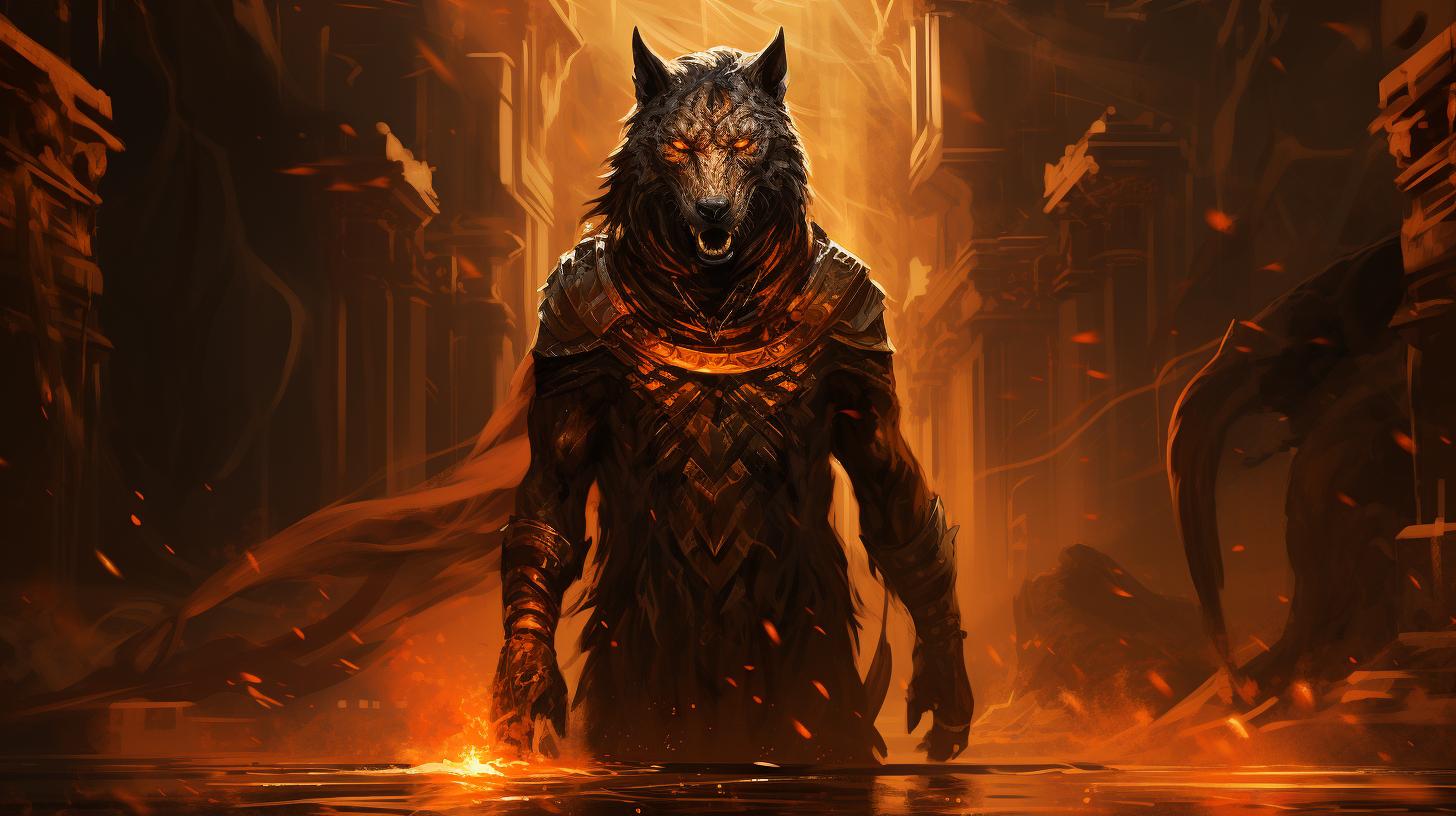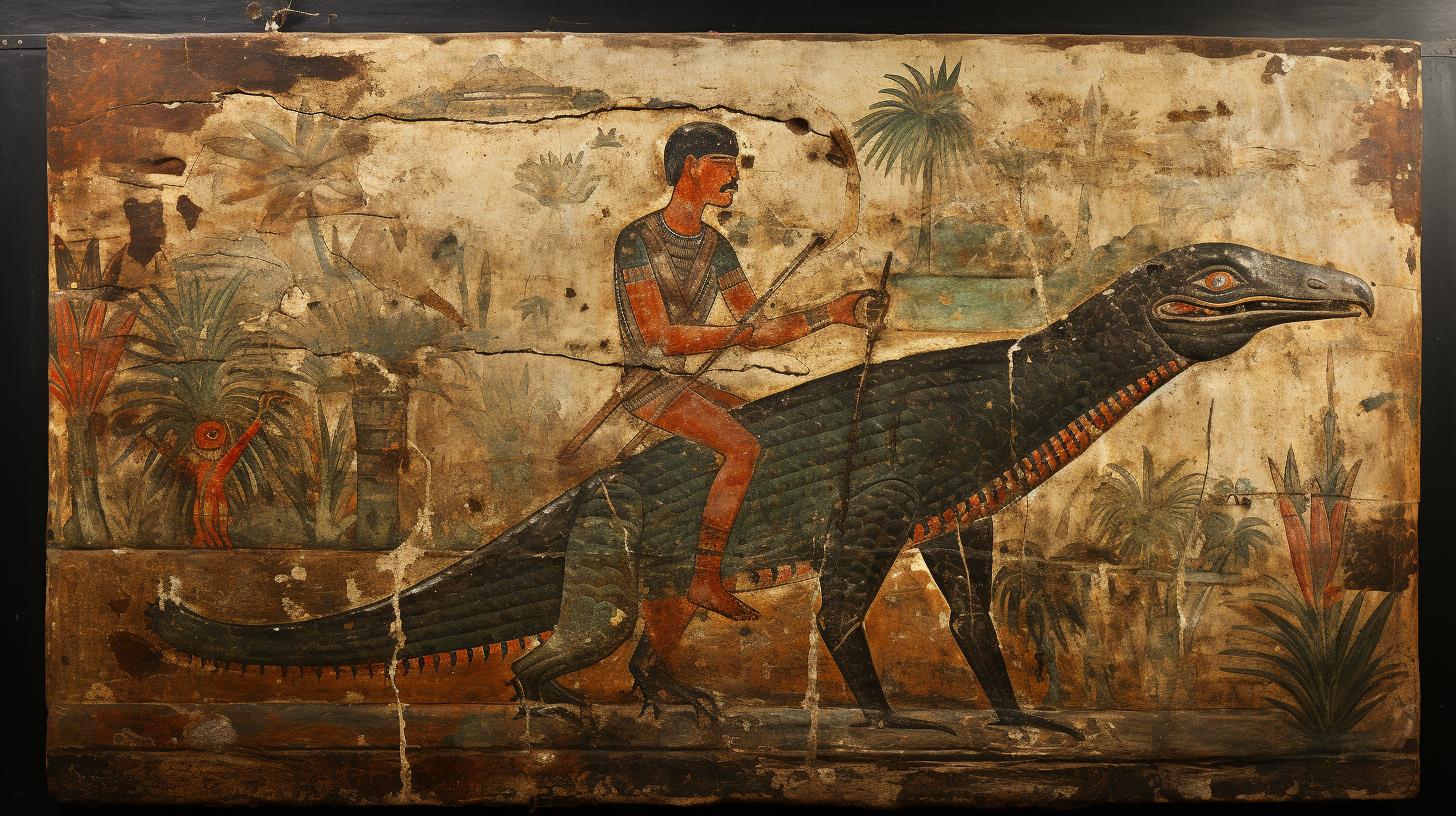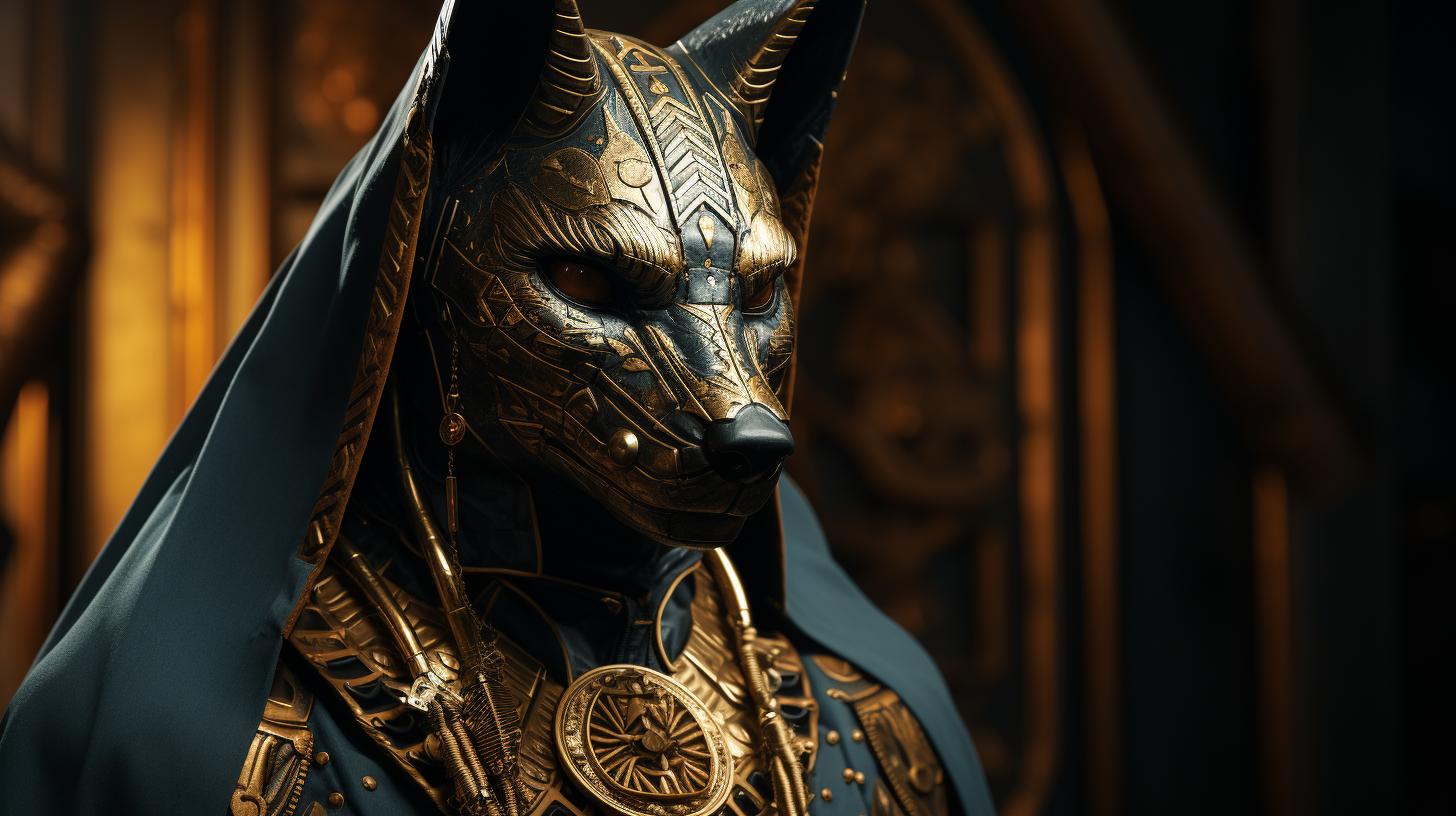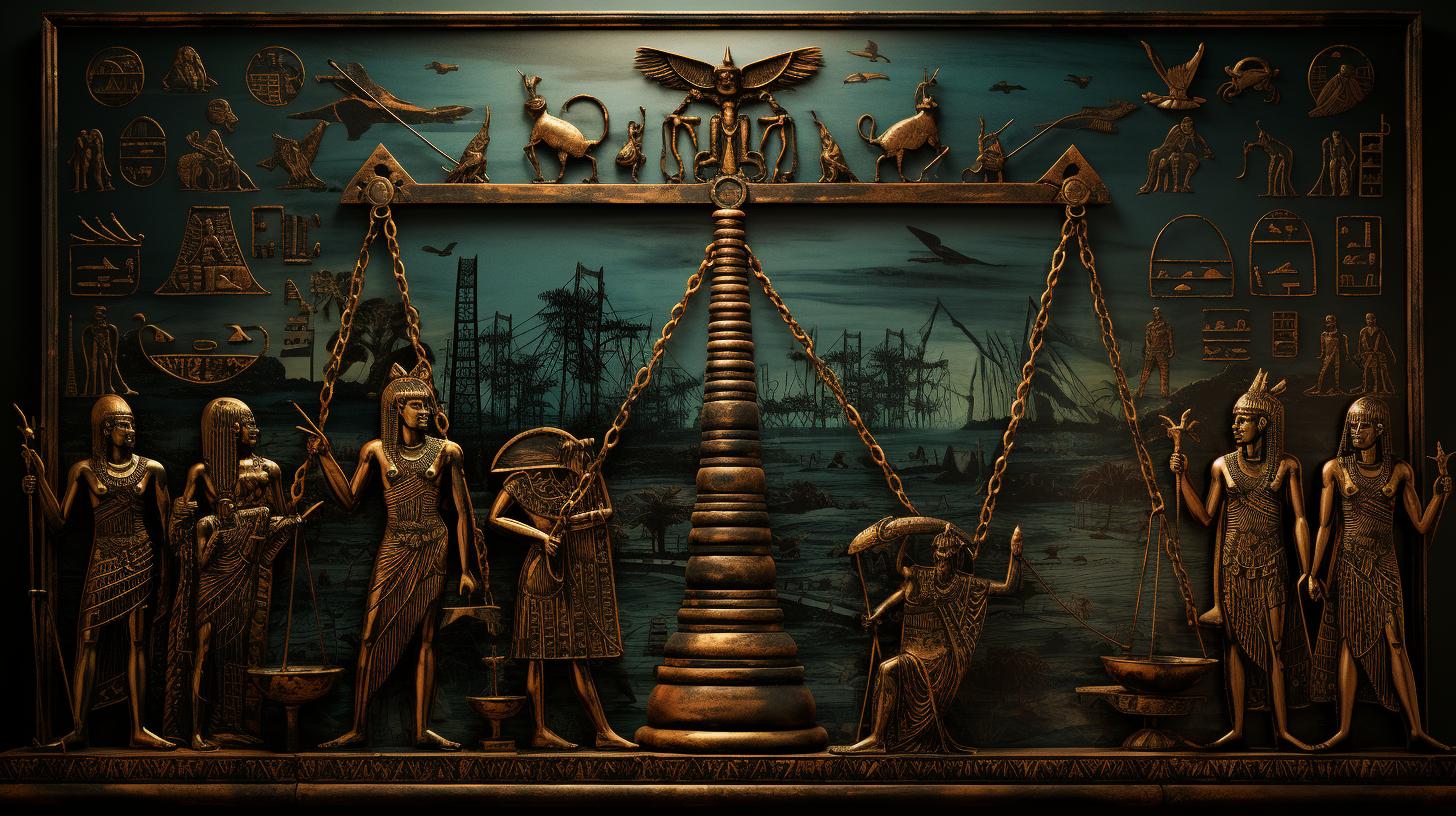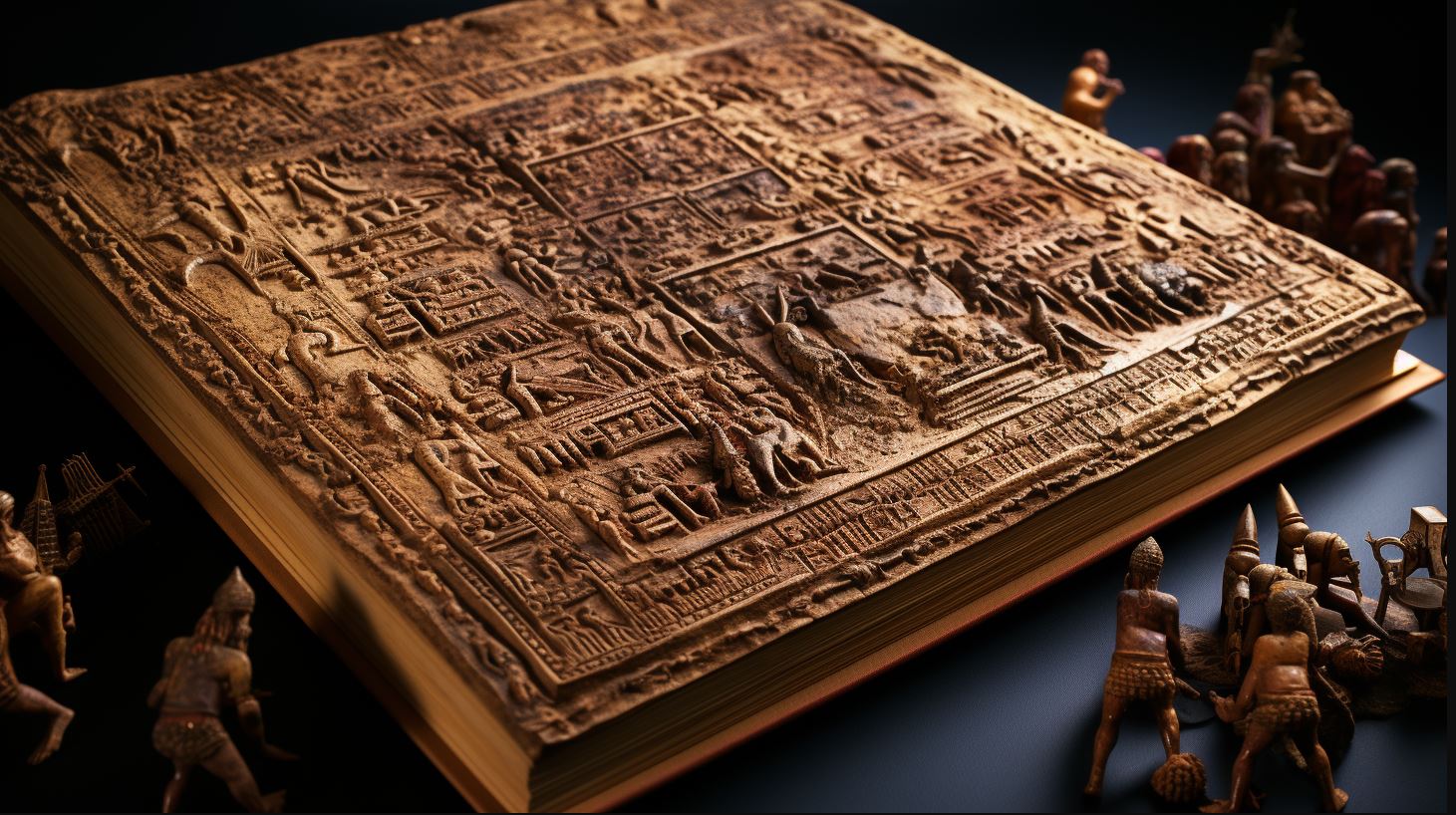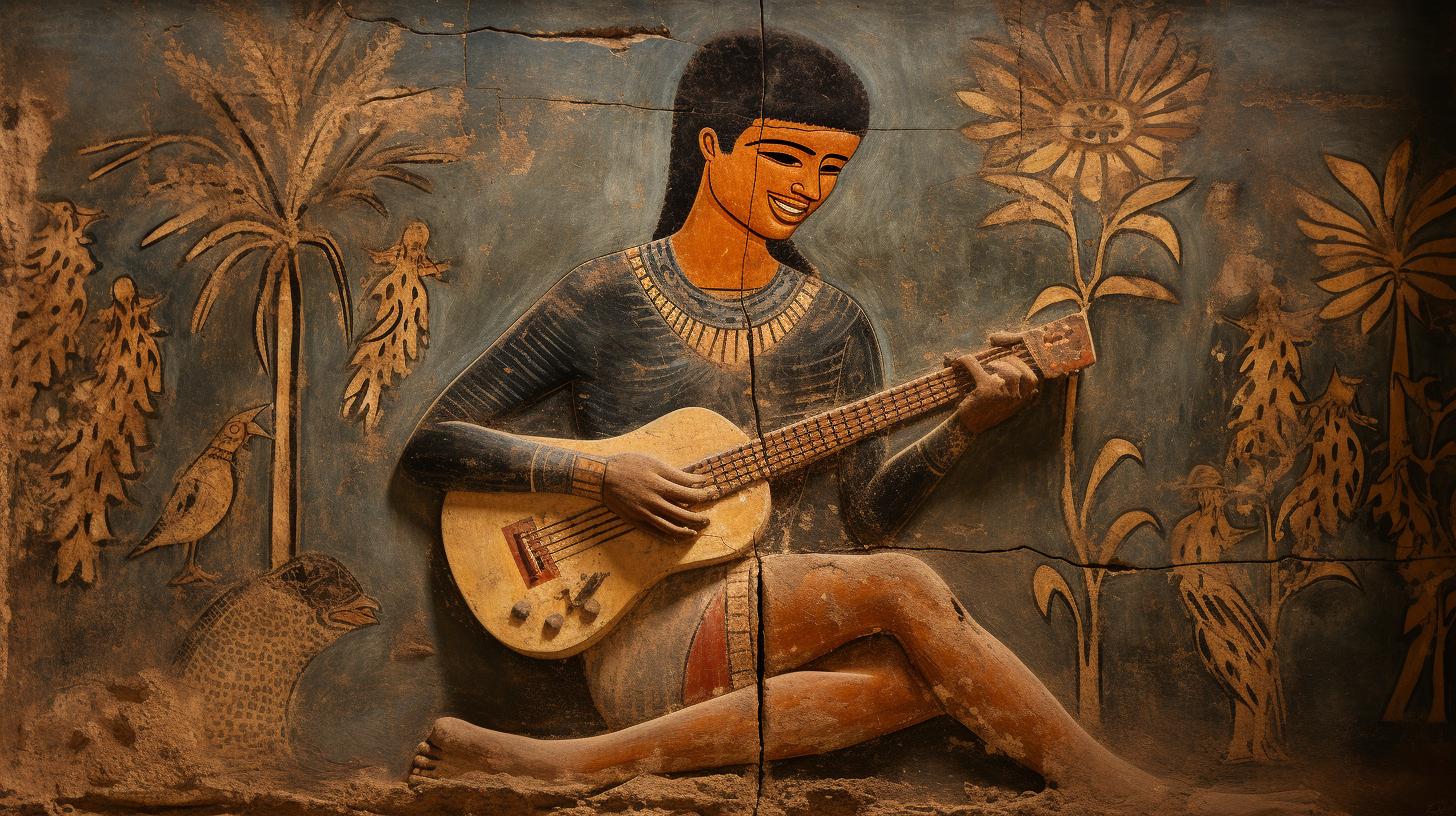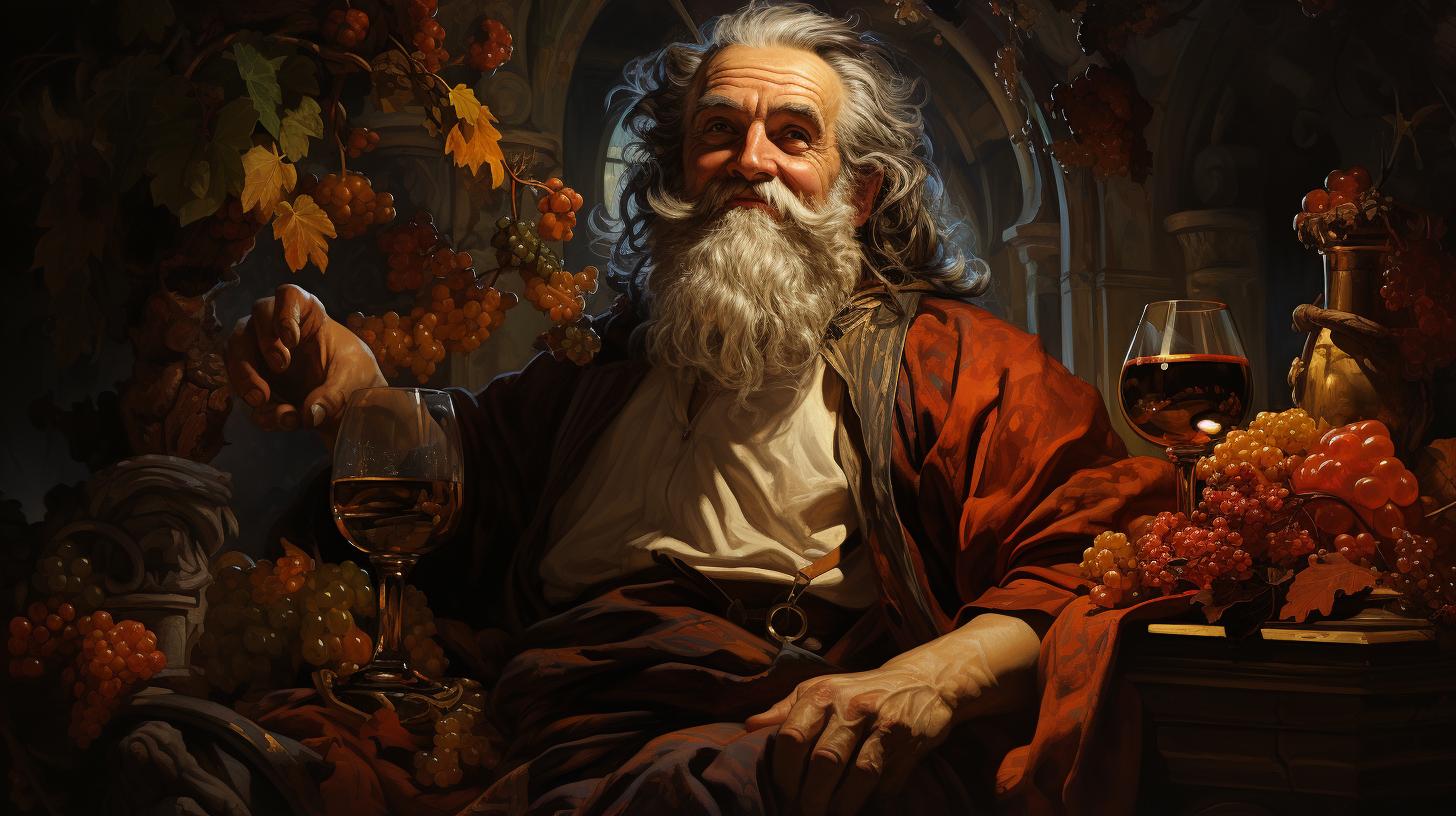Crocodile God Sobek: The Alluring Legend of Ancient Egypt
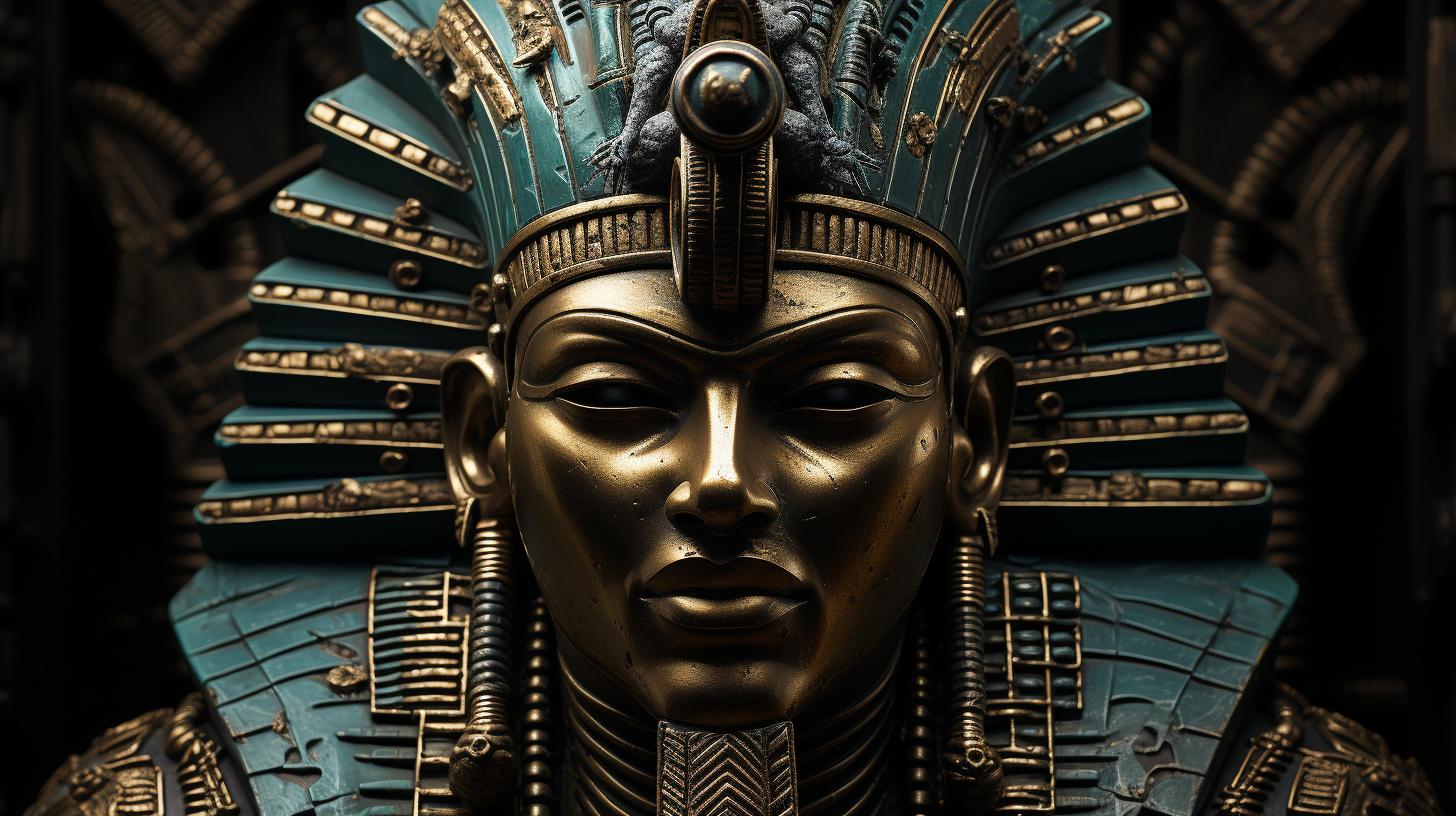
Crocodile God Sobek was one of the most powerful and revered deities of ancient Egypt and among the Egyptian gods. Worshipped since the Old Kingdom, Sobek was depicted as a man with the head of a crocodile, a symbol of power and virility.
He was associated with the Nile and considered a protector of the pharaoh and the people. His worship involved rituals and sacrifices and was practiced in various temple sites throughout Egypt.
This article will provide an overview of Sobek’s legend, his role in Egyptian mythology, his association with other gods, and his legacy in modern times.
The Legend of Sobek: An Overview
The Egyptian deity Sobek has been venerated since ancient times. He was represented as a man with the head of a crocodile and was associated with the Nile river, military power, and fertility.
Sobek was a complex deity, sometimes embodying the forces of chaos and at other times, maintaining order.
Introduction to Sobek
Sobek was a deity worshiped throughout Egyptian history. He was respected and feared due to his ability to both create and destroy life. Sobek’s image was ubiquitous, with his statue often appearing near water sources, temples, or important buildings, particularly those associated with the pharaoh.
The Worship of Sobek in Ancient Egypt
Sobek was worshiped through various means, including sacrifices, offerings, and ritual ceremonies. Ancient Egyptians believed that by worshiping Sobek, they could ensure the fertility of their crops, the safety of their military campaigns, and the well-being of their pharaohs.
Sobek was particularly popular in the Faiyum region, where his worship was focused around the Lake Moeris and the city of Crocodilopolis.
The Role of Sobek in Egyptian Mythology
Sobek played a critical role in Egyptian mythology, with his mythology weaving its story through various other gods, including Horus, Isis, and Osiris. Additionally, Sobek became associated with the sun god Ra, with his name being fused to create the deity Sobek-Ra.
The most significant myth surrounding Sobek is his return of the dismembered body of the god Osiris to Isis.
The Migration of Sobek to Other Cultures
Sobek’s importance was not limited to Ancient Egypt alone. Due to the expansion of trade and the influence of Egyptian culture, Sobek’s worship spread to other regions, particularly Nubia and Kush.
Later, during the Roman Empire, Sobek’s worship was blended with other religions and took on new forms as part of the pantheon, with some of his attributes being replaced or forgotten in favor of the new Roman pantheon.
Sobek: The Crocodile God in Ancient Egypt
Sobek was a prominent deity in ancient Egyptian religion. As a god associated with the Nile and the crocodile, he embodied powerful characteristics such as virility, ferocity, and unpredictability. Here are some of the key aspects of Sobek’s role as a god in ancient Egypt:
Sobek’s Appearance and Characteristics
Sobek was often depicted in art as a human figure with the head of a crocodile.
His body was muscular and strong, symbolizing the power of the crocodile. He was often shown wearing a headdress or crown that resembled a sun disk with plumes, symbolizing his association with the Nile and the sun.
In some depictions, he held a staff or a scepter, indicating his role as a ruler or protector.
The Worship of Sobek in Temple Sites
Sobek was worshiped at numerous temple sites throughout ancient Egypt, particularly in the Faiyum region and in Kom Ombo. These temples served as a focal point for prayers, offerings, and ritual ceremonies dedicated to Sobek.
The priests and priestesses who served in these temples played a key role in maintaining Sobek’s cult and in interacting with the devotees.
Sobek’s Association with the Nile and Fertility
One of Sobek’s primary associations in ancient Egypt was with the Nile River. He was believed to have created the Nile and was seen as its protector and source of fertility.
Sobek was invoked to ensure that the river remained healthy and that the crops grew abundantly. He was also associated with fertility in general, as well as with masculinity and procreation.
Sobek’s Relationship with Other Egyptian Gods
Sobek was closely linked with other major gods and goddesses in the Egyptian pantheon. He was often considered to be the son of Neith or Atum, and was associated with the sun god Ra in some instances.
Sobek was also frequently included in triads of deities, such as the Osirian triad of Osiris, Isis, and Horus. He was connected with other gods such as Khonsu and Renenutet, often in relation to their roles as protectors or nurturers.
The Worship of Sobek: Rituals and Ceremonies
The worship of Sobek played an important role in ancient Egyptian culture, and many rituals and ceremonies were performed in his honor. This section explores the various aspects of Sobek worship, including the role of priests, offerings made to Sobek, mummification of crocodiles, and specific places where he was worshiped.
The Role of Priests in Sobek Worship
The worship of Sobek was led by a group of priests who were responsible for performing rituals and ceremonies in his honor. These priests enjoyed a high social status in ancient Egyptian society and were well-respected by the population.
They oversaw the mummification of crocodiles and managed the temple sites where Sobek was worshiped.
The Offerings Made to Sobek
As with many other deities in Egypt, Sobek was offered various gifts and offerings to placate him and secure his favor. These included food and drink, as well as precious materials like gold, silver, and precious stones.
These offerings were meant to demonstrate the devotion and reverence the people felt for the crocodile god.
The Mummification of Crocodiles
Crocodiles were considered sacred animals in ancient Egypt and were often mummified and buried alongside humans. The mummification process was a complex and intricate undertaking that required significant resources and expertise.
The practice was particularly prevalent in the city of Faiyum, where crocodiles were bred for the express purpose of mummification and burial.
The Worship of Sobek in Faiyum and Kom Ombo
Faiyum was one of the most important centers of Sobek worship in ancient Egypt and was home to many temples dedicated to the crocodile god. The most famous of these was the Temple of Sobek and Haroeris, which dates back to the Ptolemaic period.
It was located in the city of Shedet, which was also known as Crocodilopolis.
Another important center of Sobek worship was the city of Kom Ombo, which was home to a temple dedicated to Sobek and the falcon-headed god Horus. The Temple of Kom Ombo was also built during the Ptolemaic period and features a unique double design, with two separate temples dedicated to different gods.
- The worship of Sobek was an integral part of ancient Egyptian culture and played an important role in the religious and social life of the people.
- The priests of Sobek oversaw many different aspects of his worship, including the mummification of crocodiles and the management of temple sites.
- Offerings were made to Sobek to show devotion and respect, and crocodiles were considered sacred animals that were often mummified and buried in elaborate ceremonies.
- The cities of Faiyum and Kom Ombo were important centers of Sobek worship and were home to many different temples and shrines dedicated to the crocodile god.
Sobek and Legends of Ancient Egypt
Sobek’s Association with Creation and the Sun
Sobek was sometimes associated with the creation of the world, particularly in the city of Crocodilopolis.
In this myth, Sobek created the land, the sky, and the waters that divide the world. Sobek was also associated with the sun, and at times was fused with the sun god Ra to become Sobek-Ra.
This combination of Sobek and Ra was especially popular during the New Kingdom period.
Sobek’s Role in the Osiris Myth
Sobek played a significant role in the myth of Osiris, which tells of Osiris‘ resurrection after being murdered by his brother Seth. According to some versions of the myth, Sobek aided in the recovery of Osiris‘ body from the Nile.
Sobek was seen as a protective deity who aided the resurrection and rebirth of Osiris.
The Connection Between Sobek, Horus, and Isis
Sobek had a significant connection to other gods, especially Horus and Isis. Sobek was often depicted alongside Horus and Isis, forming a divine triad that represented the importance of kingship, fertility, and protection.
Sobek was sometimes also depicted as the father of Horus, which strengthened his connection to kingship and the pharaohs.
Sobek’s Legacy in Ancient Egypt
Sobek’s legacy in ancient Egypt was significant. He was one of the most popular and important gods during the Middle Kingdom period, with several temples and cult centers dedicated to his worship.
Sobek’s worship spread throughout Egypt and to regions beyond, with temples and shrines dedicated to him found as far away as Nubia. Sobek’s legacy also continued into later periods, with the god being adopted by the Romans and revered in modern times as a symbol of Egyptian power and strength.
- Sobek was revered as a powerful god of protection, fertility, and kingship.
- Sobek held significant roles in ancient myths, including his association with creation and the sun, his role in the resurrection of Osiris, and his connection to Horus and Isis.
- Sobek’s legacy continued into later periods of Egyptian history and continues to be honored in modern times.
Sobek in the Roman Period
The Roman Empire was known for adopting and assimilating different cultural and religious practices into their own.
Sobek, the crocodile god of ancient Egypt, was no exception. Here we will explore how Sobek’s worship spread within Roman culture, how it was transformed, and its representation in Roman art and sculpture.
The Spread of Sobek Worship to Rome
The cult of Sobek expanded beyond the borders of Egypt and reached the Roman Empire during the Ptolemaic period. It is believed that the Romans first encountered Sobek worship in the region of Nubia, which was under Egyptian influence at the time.
Sobek’s perceived power and protection translated easily to Roman beliefs, which were defined by the amalgamation of gods from different cultures.
The Transformation of Sobek in Roman Culture
Sobek’s assimilation into Roman culture led to some changes in his representation and attributes. Roman depictions of Sobek portrayed him with a more anthropomorphic appearance than his traditional Egyptian representation. The Romans also emphasized his association with the Nile and water.
This is evidenced by the fact that many depictions of Sobek in Roman art included aquatic imagery, such as fish, shells, and seaweed.
Sobek in Roman Art and Sculpture
During the Roman period, Sobek was often depicted in a syncretic form with the god Harpocrates, the Greek god of silence. Sculptures and reliefs of Harpocrates-Sobek can be found in various archaeological sites in Rome and other areas of the Roman Empire.
One example is the marble statue of Harpocrates-Sobek located in the Vatican Museums, which shows Sobek with Harpocrates’ finger to his lips, indicating silence. Other Sobek representations on Roman coins display a more traditional Egyptian appearance, with Sobek’s crocodile head and body, accompanied by the Latin inscription “Soknopaios” (a reference to the god’s name in the Fayyum region of Egypt).
Summary
- Sobek’s cult spread from Egypt to Rome during the Ptolemaic period.
- The Romans assimilated Sobek into their own religious beliefs, portraying him with more human attributes and emphasizing his association with the Nile.
- Sobek was syncretized with the Greek god Harpocrates, and examples of this fusion can be found in Roman art and sculpture.
- Sobek’s representation in Roman art and sculpture varies, with depictions ranging from traditional Egyptian style to syncretic blends.
Sobek’s Modern Legacy
Sobek has endured for centuries as a revered deity in Egyptian culture and mythology.
Despite being an ancient deity, Sobek continues to hold an important place in modern society, especially in the country of Egypt.
The Reverence for Sobek Today
- Sobek is still worshipped in certain parts of Egypt today, especially in the Faiyum region where he was prominently worshipped in ancient times.
- Some Egyptians still consider the Nile crocodile as sacred and a symbol of Sobek’s power.
They believe that the Nile crocodile is an important part of their heritage and culture, despite the potential dangers they pose.
- There are various annual festivals and ceremonies held in Egypt to honor Sobek, including a massive parade in the streets of Crocodilopolis (Shedyet).
The Pop Culture Depiction of Sobek
Sobek has also made appearances in popular culture in recent years, particularly in movies, video games, and literature.
- Sobek has appeared as a character in various video games such as Assassin’s Creed: Origins and Age of Mythology.
- In literature, Sobek has been mentioned in novels such as Rick Riordan’s “The Kane Chronicles” and Wilbur Smith’s “River God”.
- Sobek has also appeared in animated shows, such as “The Mummy” and “The Batman”.
The Preservation of Sobek in Museums and Art Galleries
Many historical artifacts and artistic representations of Sobek are preserved in museums and art galleries all over the world, demonstrating the lasting legacy and impact of this ancient deity.
- The British Museum in London has a significant collection of ancient Egyptian artifacts, including several statues and carvings of Sobek.
- The Egyptian Museum in Cairo is dedicated to Egyptology and displays many relics from ancient times, including a mummified crocodile that was once considered to be sacred and may have been a pet of Sobek himself.
- The Louvre Museum in Paris also has a considerable collection of ancient Egyptian art, including carvings and sculptures of Sobek.
In conclusion, Sobek’s modern legacy is a testament to his enduring importance in Egyptian culture and mythology.
From his continuing worship in parts of Egypt to his appearances in popular culture and preservation in museums and galleries, Sobek remains a significant figure in both ancient and modern times.
Sobek: The Nile Crocodile Deity Today
Although the worship of Sobek declined with the fall of ancient Egypt, the deity continues to be revered and recognized today. Many believe that Sobek still has the power to protect and provide, and his legacy can be seen in different forms of art and sculpture all over the world.
Here are some of the ways we can still see Sobek’s influence today:
- Art: Sobek is often depicted in modern art, showcasing his powerful and intimidating appearance. Many artists use his image to represent strength and fearlessness.
- Museums and Art Galleries: Many museums display artifacts related to Sobek worship, including hieroglyphs and mummified animals.
These relics offer a glimpse into the ancient world and allow us to continue learning about Sobek’s importance.
- Pop Culture: Sobek has been featured in movies, video games, and other forms of pop culture.
He is often portrayed as a fierce and mighty warrior, fighting for justice and protecting the innocent.
Despite being thousands of years old, Sobek’s legacy lives on, and his influence can be seen in different aspects of our society today.
His power and might are still respected and celebrated, and his image continues to inspire people around the world…..











